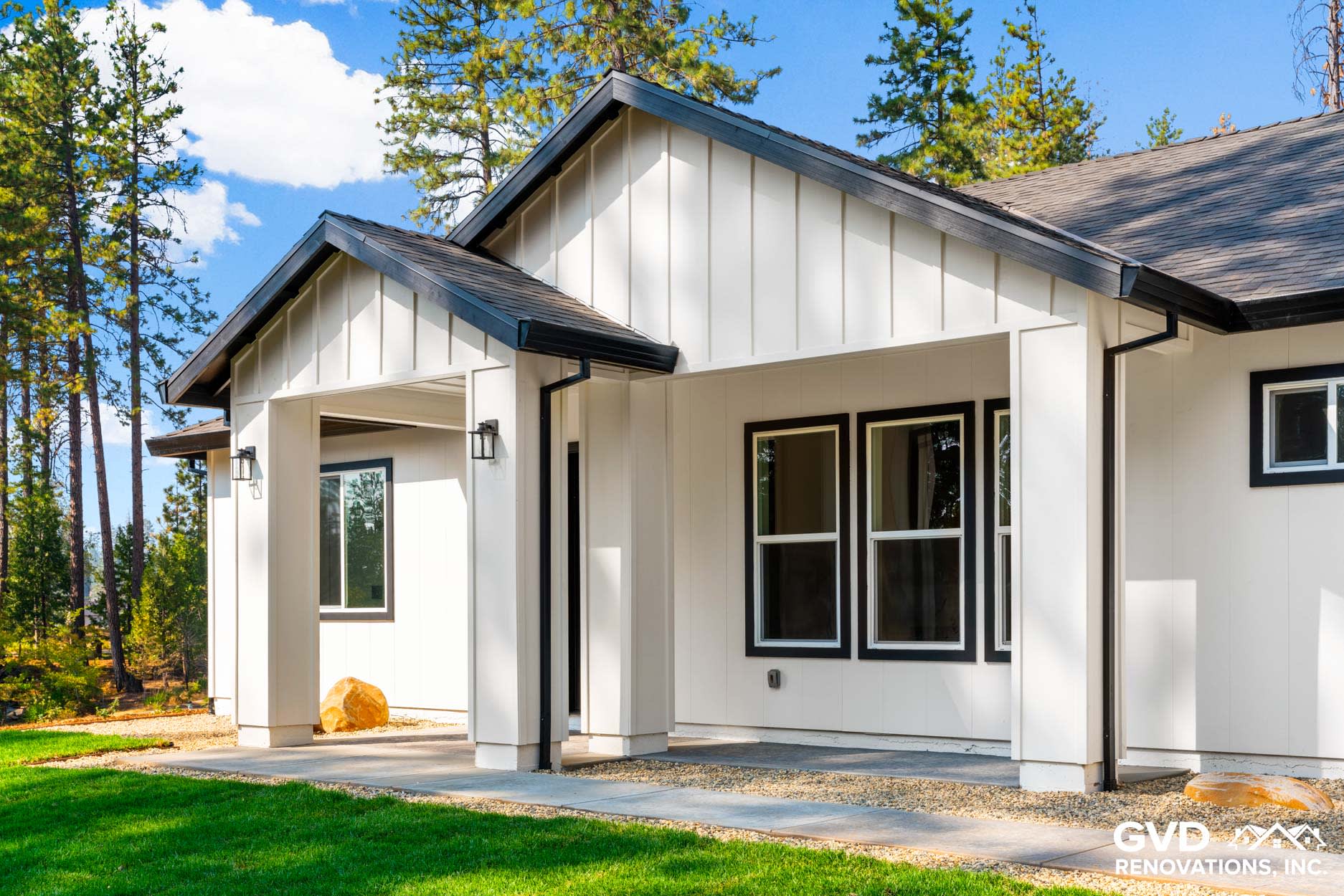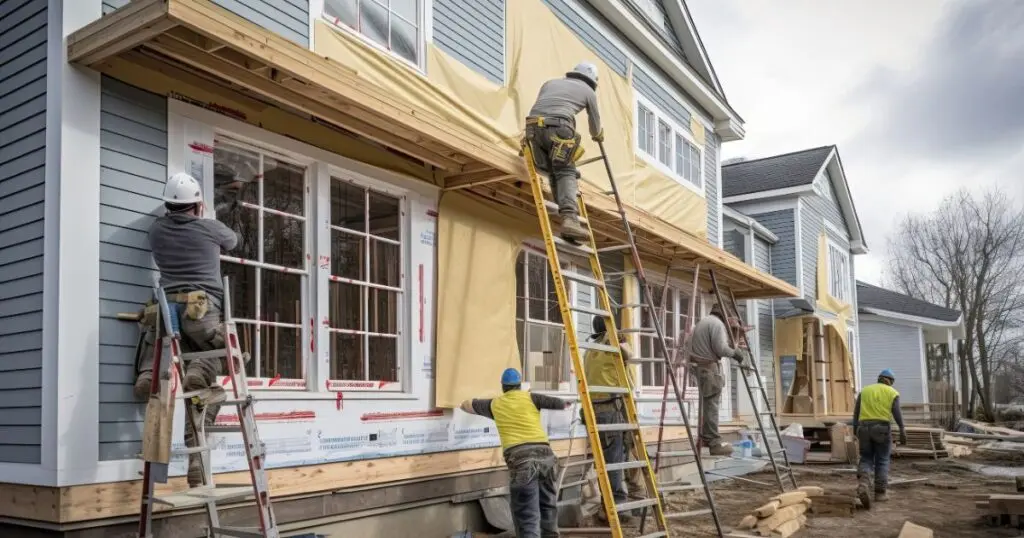The Vital Guide to the Various Types of Home Siding and Their Unique Advantages
In the world of home improvement, choosing the best house siding is an essential decision that influences both aesthetic appeal and useful performance. The variety of materials available, such as timber, plastic, fiber concrete, metal, and block, each offer one-of-a-kind advantages that deal with various requirements and choices. Comprehending these distinctions can substantially improve the durability and worth of a building - morris siding contractor. Nevertheless, with so numerous alternatives to take into consideration, which siding material genuinely sticks out for your particular project? Checking out these choices can cause notified decisions that line up with both style and usefulness.
Timber House Siding
Timber home siding, a prominent option for property outsides, supplies a classic aesthetic that incorporates natural charm with structural stability. This house siding product is readily available in various styles, consisting of clapboard, roof shingles, and board-and-batten, allowing house owners to tailor their façade to match their layout choices. Timber house siding is commonly crafted from long lasting types such as cedar, redwood, or want, which are recognized for their resilience and capacity to hold up against environmental stressors.
One of the key advantages of timber home siding is its excellent insulation residential properties, which can add to energy efficiency and reduced heating prices. Furthermore, timber house siding is naturally degradable, making it an environmentally pleasant choice when sourced sustainably. Normal maintenance, including paint or discoloration, can extend its life expectancy and enhance its look, permitting home owners to preserve the natural appeal of the wood.
Nonetheless, prospective disadvantages include susceptibility to insects, rot, and climate damage, demanding appropriate treatment and maintenance - morris siding contractor. In spite of these issues, when correctly looked after, timber exterior siding can offer a durable and lovely option that boosts the character of a home while using a cozy, welcoming atmosphere

Plastic House Siding
Vinyl house siding has actually become a leading selection for home owners seeking a low-maintenance exterior choice that integrates durability and affordability. This versatile material is crafted from polyvinyl chloride (PVC), making it immune to different weather condition conditions, including dampness and UV rays. Consequently, plastic home siding does not warp, rot, or discolor, guaranteeing durable aesthetic charm.
One of the key advantages of vinyl house siding is its substantial variety of colors and styles, enabling property owners to achieve the preferred try to find their home without the demand for constant repainting. Additionally, vinyl house siding is easy to install, which can substantially decrease labor expenses throughout building and construction or restoration jobs.
Plastic exterior siding likewise adds to power performance. Lots of options feature insulation backing, which improves thermal efficiency, helping to maintain comfy indoor temperature levels and potentially lowering energy expenses. Furthermore, its smooth surface helps with easy cleansing, calling for just regular washing with a yard pipe to remove dust and debris.
Fiber Concrete Siding
Fiber cement exterior siding has gotten grip amongst home owners and contractors alike due to its exceptional combination of toughness and visual adaptability. Made up of a mixture of cellulose, cement, and sand fibers, this visit this web-site house siding option is crafted to endure extreme climate condition, including high winds, heavy rainfall, and temperature fluctuations, making it a durable selection for residential exteriors.

One of the primary benefits of fiber concrete home siding is its resistance to insects, such as termites, and its non-combustible nature, offering boosted fire safety and security. morris siding contractor. Additionally, it is offered in a wide range of appearances, colors, and styles, permitting home owners to attain their desired aesthetic without sacrificing efficiency
One more benefit is its low upkeep needs; fiber cement home siding normally requires painting or staining every 5-10 years, which is much less regular than other products. Furthermore, its longevity contributes to a reduced general cost of ownership, as it decreases the need for frequent repair work or substitutes.
Eventually, fiber concrete exterior siding represents an excellent financial investment for those seeking a durable, eye-catching, and versatile outside choice, combining both form and function to boost the home's curb appeal.
Metal Siding
The allure of metal siding exists in its robust toughness and contemporary visual allure, making it a favored selection for contemporary architecture. Readily available in products such as light weight aluminum and steel, metal home siding uses a range of shades and surfaces, allowing property owners to accomplish a customized appearance useful link that matches their layout vision.

Power efficiency is an additional significant advantage, as several steel home siding products are created with insulation options that assist manage indoor temperatures. This can cause lowered energy costs in time. Furthermore, metal siding is frequently recyclable, making it an see ecologically friendly choice for sustainability-minded homeowners.
The installation process for steel home siding can be relatively uncomplicated, leading to a quicker turnaround time for building and construction projects. On the whole, steel house siding combines capability and design, making it a useful alternative for those looking for a long-lasting and aesthetically appealing exterior finish.
Brick and Rock Exterior Siding
Brick and rock home siding sticks out as a timeless selection that boosts the visual appeal of any type of home. Known for their resilience and reduced maintenance, these products offer an extraordinary roi while elevating the building's visual appeal. Offered in numerous shades, textures, and patterns, brick and stone can be customized to suit diverse building designs, from typical to modern-day.
Among the primary advantages of block and stone home siding is their power performance. Both products have natural shielding residential or commercial properties that help manage interior temperatures, possibly minimizing cooling and heating prices. In addition, they provide superior fire resistance contrasted to various other home siding choices, contributing to improved safety.
Another advantage is their long life. Block and stone can last for decades, typically requiring very little upkeep past occasional cleansing. Unlike wood exterior siding, they are unsusceptible pests and rot, making sure a resilient outside that withstands the components.
Verdict
In summary, the selection of exterior siding considerably affects a home's aesthetic charm, energy performance, and upkeep needs. Each type of home siding-- whether wood, plastic, fiber brick, concrete, or steel and stone-- supplies one-of-a-kind benefits tailored to numerous house owner choices and environmental problems.
One of the primary benefits of timber home siding is its exceptional insulation homes, which can add to energy efficiency and lower home heating expenses. Additionally, timber siding is biodegradable, making it an environmentally friendly alternative when sourced sustainably.One of the primary advantages of steel home siding is its resistance to different ecological elements.Power efficiency is one more substantial advantage, as several steel house siding items are developed with insulation choices that help manage interior temperature levels. Each kind of home siding-- whether wood, vinyl, fiber block, concrete, or metal and rock-- offers one-of-a-kind advantages customized to different home owner choices and ecological conditions.